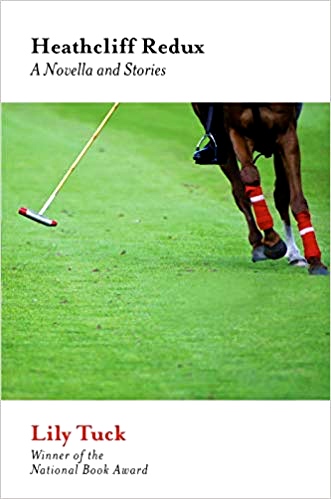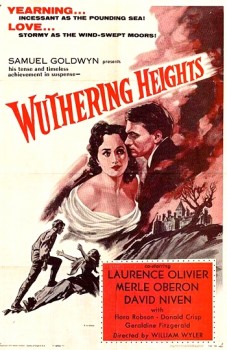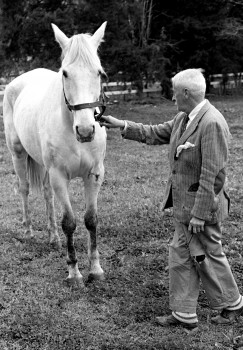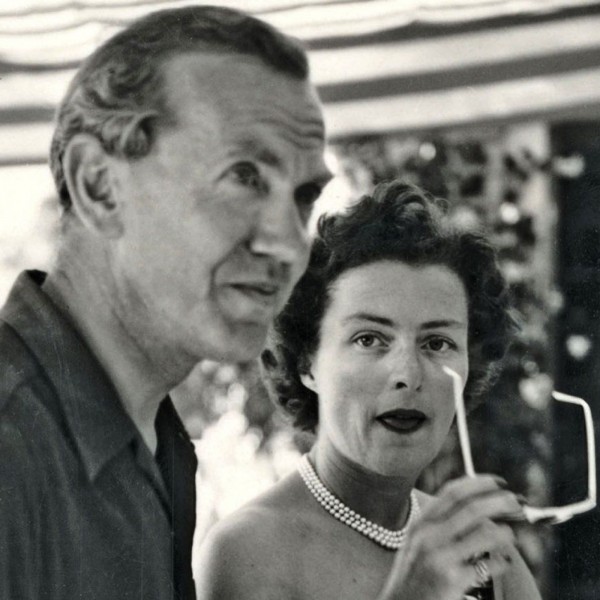Note: Lily Tuck was WINNER of the National Book Award in 2004 for The News From Paraguay.
“Heathcliff’s enduring appeal is approximately that of Edmund, Iago, Richard III, the intermittent Macbeth: the villain who impresses by way of his energy, his cleverness, his peculiar sort of courage; and by his asides, inviting, as they do, the audience’s or reader’s collaboration in wickedness.” —Quotation from Joyce Carol Oates, “The Magnanimity of Wuthering Heights,” Critical Inquiry 9, no. 2 (Dec. 1982): 435-49.
 In this a minimalist adaptation of Emily Bronte’s Wuthering Heights, contemporary author Lily Tuck modernizes Bronte’s characters and relocates them to the horse country of Albemarle County, Virginia.
In this a minimalist adaptation of Emily Bronte’s Wuthering Heights, contemporary author Lily Tuck modernizes Bronte’s characters and relocates them to the horse country of Albemarle County, Virginia.
Here Bronte’s anti-hero Heathcliff becomes, instead, “Cliff,” no longer the wild and passionate man so driven by emotions that he is often described as “demonic,” or an evil spirit. In the novella Heathcliff Redux, Tuck’s anti-hero is a far more realistically portrayed young man of limited education and even more limited self-awareness, a bit tamer than Heathcliff, but just as conniving. Like his Heathcliff predecessor, Cliff is still trying to “find himself” and begin the life and career he believes he is destined for, and also like his predecessor, he falls in love with the wife of someone with whom he has much contact, a woman who is also passionately drawn to him through their shared connections and their love of horses. Set in the early 1960s, Heathcliff Redux reflects the comfortable and self-involved lives of upper middle-class Americans who have little understanding of how privileged they really are – people who obey their impulses because they can.
Telling the story in the first person, the narrator recalls reading Wuthering Heights in high school and to having seen the 1939 film, starring Merle Oberon, Laurence Olivier, and David Niven. Though she is from Massachusetts and has disliked the southern culture in which she has lived throughout her ten-year marriage, she continues to work with her husband Charlie on their four-hundred acre farm in Virginia where they also raise beef cattle. As the novel opens, the speaker and Charlie are attending a steeplechase race with neighbors. This year, during the race, a gray horse falls and has to be put down, leading to a brief reference to Native Dancer, also a “gray,” who won the Preakness and the Belmont in 1953, a contrast in fates that becomes a symbolic moment just before the narrator meets Cliff for the first time. Immediately attracted to him, the speaker asks if “Cliff” is a nickname for “Heathcliff,” only to discover that Cliff has never read Wuthering Heights and has no idea what she is talking about. A digression about dogs and Emily Bronte’s dog Keeper, who howled for a week after she died at the age of thirty, about the speaker’s twin sons, and about the solitary cuckoo bird, who lays its eggs in another bird’s nest, are other suggestive images adding to the ominous mood of the story here.
The female speaker is re-reading Wuthering Heights, and numerous references and quotations from that novel appear throughout the remainder of this novella as the general pattern of the Wuthering Heights plot continues, with emphasis on the damage Cliff’s relationship with the speaker is causing her family. Literary references appear throughout, adding “stature” to the main characters and plot, which are developed “minimally.” William Faulkner, who used to hunt on his horse called “Powerhouse” is featured, and on a family trip to the University of Virginia, the family visits the dorm room of Edgar Allan Poe. Back home, the speaker and her husband Charlie run into increasing financial problems related to Cliff, who is her husband’s business partner, and the conclusion, like that of a Greek tragedy, comes inevitably. The final scene between Cliff and the speaker is interrupted by a news report of the assassination of President Kennedy.

The room of Edgar Allan Poe, visited by the speaker and her family at the University of Virginia
Four short stories appear after the Heathcliff Redux novella, and these, too, include numerous literary references. “Labyrinth Two,” which takes place on the isle of Capri in the 1950s, is described as an “homage of sorts” to Roberto Bolano. The author introduces the story with a photograph in which two young men and two female friends are having drinks before dinner and chatting about their lives. Describing the photograph in detail and indicating that it was probably taken in the late 1950s, the speaker also mentions Alberto Moravia, Orson Welles, and Pablo Neruda. The backgrounds, interests, and loves of the quartet at the table having dinner occupy the remainder of the story as they get ready to go to Gemma’s where they hope to meet Graham Greene and his “great love,” Catherine Walston. The many characters and their histories remain superficial, making this story difficult to follow and empathize with, which may be the whole point, a primary focus here being on the literary references and pleasurable setting in 1950s Capri.
“The Dead Swan” has echoes of the myth of Leda and the Swan, as a young woman whose husband is in jail for problems with drugs, finds a dead swan and brings it home, and as she thinks about her life with her unstable husband, she also thinks of the swan, who mates for life and is now dead. “Carl Schurz Park” tells the story of four young men who pick up a young woman “for cash” and then, in Carl Schurz Park throw her off a bridge into the East River. Years later, the wife of one of them talks about the Peter Pan statue in that park and the fact that she’d like to go to the park with him to see it, an irony which causes the husband to remember his secret past. “A Natural State” tells of a woman’s harassment by a Swedish man via e-mail. Alarmed, she thinks of Kenneth Branagh, who plays Wallander, the Swedish detective in films, of thriller writer Jo Nesbo, and of literary author Peter Hoeg, as she also remembers her time backpacking in India, her participation in an infamous cult, and her lovers of both sexes.
Heathcliff Redux and the four stories are minimalist, and as such are much more abbreviated – and feel more undeveloped – than what some readers will expect. Identification with the characters is difficult, as the plot line, and sometimes the themes, are left up to the reader to figure out based on brief clues by the author. The dialogue feels real, and the depiction of small moments is insightful, but I often longed for a Big Moment and some sort of Dramatic Recognition on the part of the many characters as I observed them from my distanced viewpoint.
Photos: The poster of the 1939 film of Wuthering Heights appears on https://www.filmsite.org
William Faulkner and his horse are from https://news.olemiss.edu
The Edgar Allan Poe Room at the University of Virginia is maintained by the Raven Society: https://news.virginia.edu
Graham Greene and his “great love,” Catherine Walston are found on https://www.newsweek.com
Author Lily Tuck’s photo appears on https://www.abc.com.py




